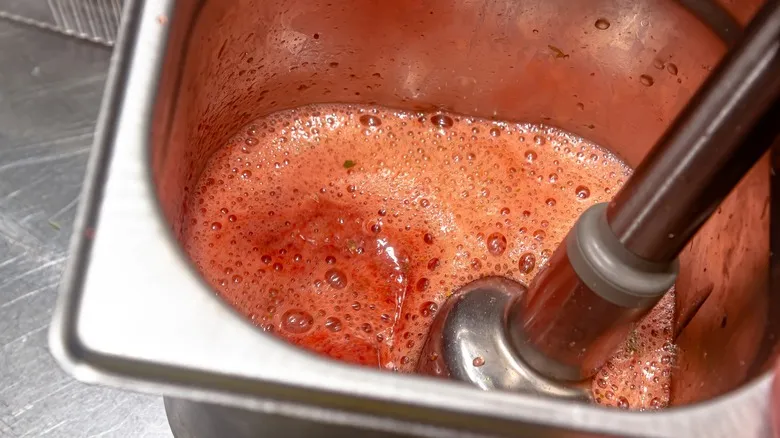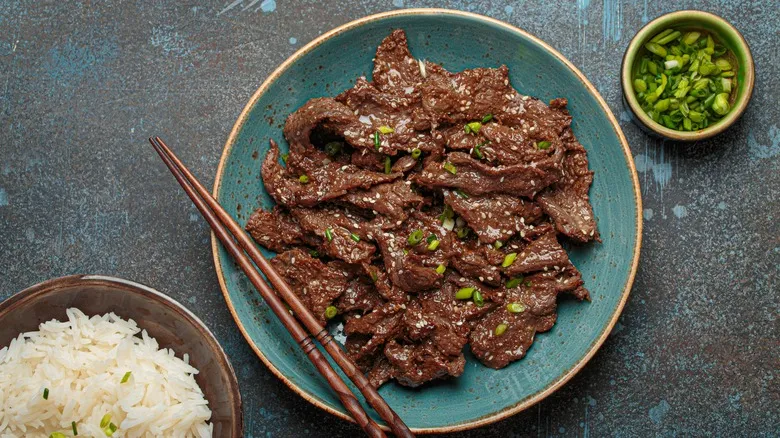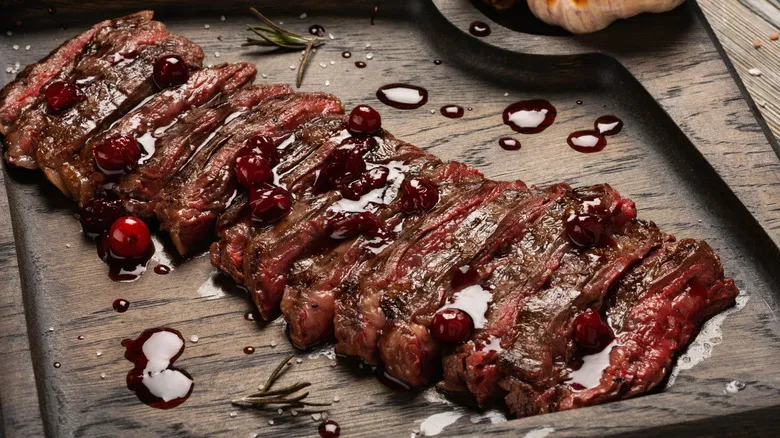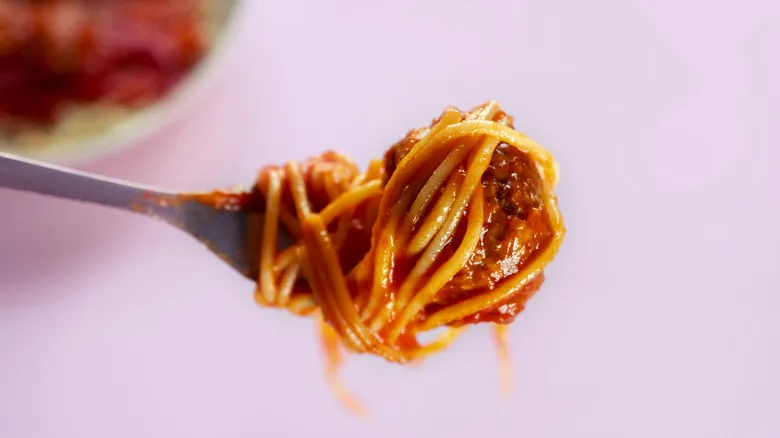How to fix pink sauce

Certain pasta sauces are designed to have a pink hue, often enhanced by a splash of cream or blended beets that give the dish a rose-tinted appearance. In contrast, traditional tomato sauces should generally reflect the vibrant red of a ripe tomato. While a pastel pasta sauce may sound appealing, it is possible to revert your sauce to that classic crimson tone.
Allowing the sauce to rest and letting the bubbles dissipate can help restore its original color. Some chefs suggest blending the sauce for an additional minute or two to eliminate any remaining bubbles. Alternatively, you can return the sauce to the stovetop for a longer simmer. As it thickens, the sauce will deepen in color. Adding a bit of tomato paste can also enhance both the flavor and color of your homemade tomato sauce by thickening its consistency and enriching its taste.
Recommended

The Soda That Gives You Perfectly Marinated Beef Bulgogi

The Best Juice To Drink With Steak When You're Bored Of Red Wine

How To Choose The Best Clementines At The Grocery Store Every Time

How Carla Hall Adds More Flavor To Egg Salad
Next up





